A new series of WW1 Wings of Glory Airplane Packs brings to the game four new aircraft - Pfalz D.III, Raf SE.5, Rumpler C.IV, and Breguet BR.14. Let’s learn more about each of them, starting by the German fighter Pfalz D.III.
By the time of WW1, although “German unification” was over 40 years old, there was still significant loyalty to the old German states. Thus, you will find some army regiments labeled “W” for “Wurtenburg” and “B” for “Bavarian.” There are some decorations and medals from specific German states - sometimes reserved for their citizens and sometimes (as with the Red Baron) given to others. And some fighter squadrons (Jastas) included the state “letter” and were made up – primarily - of pilots from that state. With Bavaria, there was additional interest in supplying these Jastas with planes manufactured there. It can explain some of the success of the Pfalz company, who had only moderate success with planes that were moderately well designed.
Pfalz’s first plane was the E-1, an almost exact copy of a Morane monoplane. They built other companies’ planes under license and learned new techniques. The work they did producing Roland fighters (the D.1 and D.2) certainly influenced their own design, as the Pfalz D.III used the same plywood monocoque technique, in which thin layers of plywood strips were formed over a mold, then covered with fabric and doped. Though more expensive and time consuming, the result was a smooth, light, and strong design, excellent for airplanes of the day.
The air war on the Western front had seen the Germans introduce the Albatros D.II and D.III early in 1917 and achieve a significant advantage over the DH-2s, Pups, Nieuport 11s, and other opposing Allied fighters, culminating in what was known to the British as “Bloody April.” The Albatros D.V was introduced that summer but offered little performance improvement over the D.III, while increasing numbers of improved Allied planes had the Jastas calling out for a more advanced design.
The Pfalz D.III saw its first front-line use in August 1917 with Jasta 10, a Prussian unit. While pilots appreciated the Pfalz’s sturdiness, especially in the face of lower wing failure problems in the Albatros, they complained about its heavy controls, low speed, lack of climbing ability, and tendency to stall and spin. Since the Pfalz could dive long and hard, it became a preferred fighter for attacking enemy balloons or making hit-and-run attacks on enemy aircrafts. Pilots adapt as best they can. What they complained about the most with the Pfalz D.III was the guns being located within the fuselage. While this produced a streamlined design, it meant the pilots could not access the guns to clear jams, which were a frequent problem of the day.
By November of 1917, Pfalz’s improved D.IIIa was reaching the front lines, placing the guns in the traditional position in front of the pilot, while also increasing the size of the horizontal stabilizer and using a slightly more powerful engine. These improvements helped. Just over 1000 Pfalz D.IIIs were built, with ¾ of them being the D.IIIa model. Most were delivered to Bavarian units (though a few were sent to Turkey). In May 1918, Pfalz production shifted to their D.XII model. Though the numbers declined as better planes became available, there were still a few Pfalz D.IIIs in front line use when the Armistice was signed.
Many successful pilots, some of whom were famous aces, flew the Pfalz D.III: Werner Voss (48 victories, Pour Le Merite), Emil Thuy (35 victories, Pour Le Merite), Hans Klein (22 victories, Pour Le Merite), and others. Erich Löwenhardt scored his 3rd through 24th victories while flying a Pfalz D.III and D.IIIa - his 22 victories in Pfalz D.III machines probably make him the leading Pfalz D.III pilot.
Pfalz D.III in Wings of Glory
The Pfalz D.III’s Airplane Packs include special cards covering the extreme diving ability of the model and give players the option of penalizing the machine gun placement by making gun jams permanent. The fighter is featured in three versions, two Pfalz D.IIIa flown by Rudolf Berthold and Max Holtzem, and a D.III by Werner Voss.
Rudolph Berthold is one of the unusual stories of pilots learning to fly before the war began. He had not quite completed his pilot training and was drawn back into his infantry regiment by the unsteady situation in July 1914, but then returned to the air service before the war actually began - as an observer. He received the Iron Cross 2nd and 1st class for observer services in 1914 and finished his pilot training on the side, at first making aggressive offensive patrols in a large AEG G-II bomber. Finally shifting to the Eindekker he began a career combining combat effectiveness with leadership and organizational skills, leading one of the first Jastas, then one of the very first Jagdgeschwaders.
In October 1917, he was shot down and his right arm badly injured and nearly amputated. Heavily addicted to pain killers from these wounds, he still returned to duty in the Spring of 1918 and to combat - flying essentially with just his left arm. He shot down 16 more enemy before being downed and injured again. Still, it took a direct order from the Kaiser to get him off the front line, and he was convalescing when the War ended, only to be killed in 1920 in the mob violence that wracked Germany the first years after the war.
In addition to the standard cards for the Pfalz, this model includes cards with various attributes about Berthold, including his “Strong constitution,” his “Team coordination,” and his luck, but also including the detriment of his one-armed flying.
Max Holtzem was one of the early aviators in Germany and served with a Taube unit when the war began, and later became a test pilot and flight instructor for Pfalz, serving in this duty for about two years. Requesting a combat assignment, he went to Jasta 16b (a “Royal Bavarian” squadron known in particular for balloon busting) and served with that unit through the end of the war, being credited with several allied fighters.
Holtzem survived the war, worked as a stunt pilot in South America, and then for the Fokker company in America, as a test pilot and as a flight inspector, and on the P51 Mustang production line during WW2. He became a US citizen and lived in that country for the rest of his life, dying at age 87.
His Pfalz is strikingly decorated with a comet, a symbol which he said represented his mother as a guardian angel. She died when he was just nine years old, but there may be something to his belief, as he survived the war and the work as a stunt pilot. The special cards for this model cover a wide range of possible pilot skills, both good and bad. They include “Lucky pilot” and “Intuitive,” as well as “Itchy trigger finger” and extra abilities at escaping from trouble and avoiding gun jams.
The history of Werner Voss is “well known,’ except the more one looks, the more things seem to be only half-true or not at all, the biggest canard being that Voss was Jewish. He may have had a Jewish grandparent, but his mother was an ardent Lutheran and his father did not seem to practice much religion at all. The more one digs into the history, the less substance there is for the Jewish claim, so let us just dismiss it and move on.
Voss grew up in what we might call an “upper middle class” environment with personal interests both patriotic and mechanical. He joined a local militia unit and spent the first months of the war as a volunteer civilian motorcycle driver before being sent to a hussar regiment on the eastern front. After winning the Iron Cross and being sent for officer training, he transferred to the air force, was shown to be a gifted natural pilot and retained as an instructor before combat assignments as both an observer and bomber pilot. He was finally transferred to Jasta 2 in November 1916, shortly after Boelcke had died in a collision and befriended another pilot there named Manfred von Richthofen.
Voss loved machinery and was known to “consort” with his preferred mechanics, who actually transferred with him to different squadrons. He proved to be a very successful combat pilot, standing out for rapid increases in his score (even in the same squadron as the Red Baron!). He had the “bad timing” of being awarded the Pour le Mérite just as “Bloody April” was beginning and missed that busy time with the mandatory leave that came with the award.
After returning Voss continued to score, with several different Jastas before taking command of Jasta 10, which was equipped with both Albatros and Pfalz fighters, and soon after including one of the early prototypes of the Fokker Triplane, which became Voss’ personal plane. He was flying that plane when his very famous dogfight happened with what might be regarded as an “all-star” pilot team of Se5s from 56 Squadron. His plane crashed on the British side of the lines during a heavy action and his body was hastily buried in a shell hole and the location lost. James McCudden said, “His flying was wonderful, his courage magnificent and in my opinion, he was the bravest German airman whom it has been my privilege to see fight."
The cards for this model accent attributes with the early Pfalz, including great diving ability but unreachable guns, and also give a host of skills about Voss, including stunt flying, acrobatics, excellent marksmanship, and an intriguing card called “Super Ace.”
Information sources: Wikiwand, Early Aviators, Werner Voss: The Life Of A Teenage Ace, "Flying Fury: Five Years in the Royal Flying Corps", McCudden (Casemate Publishers, 2009), "September Evening: The Life and Final Combat of the German Ace Werner Voss", Diggens (Grub Street, 2003), "Iron Man: Rudolf Berthold: Germany's Indomitable Fighter Ace of World War I", Kilduff (Grub Street, 2012). * SDASM Archives - San Diego Air and Space Museum Archive.

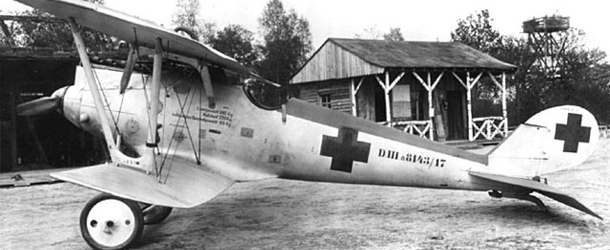
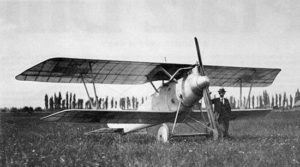
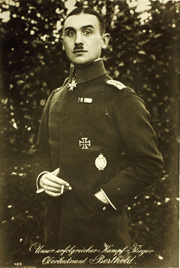
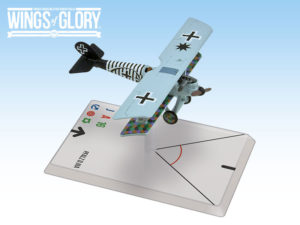


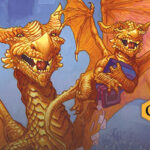






Follow Us on